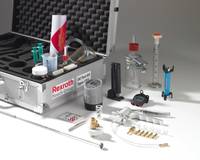
Itās easy to skip critical maintenance tasks, especially when operational budgets are being reduced. Are you prepared for the risks to vital equipment? Right now, taking steps to assess and prep your equipment so you reduce downtime later can help pay dividends when offshore activity ramps up. Itās also far less costly than equipment replacement.Click Here to Join!In the world of industrial hydraulicsā¦

Tip #5: Condition Monitoring - If it isnāt broken, let it beContrary to popular belief, machines running smoothly should never be left alone. Regular hydraulic oil sampling will give insight to the overall systems health. Key indicators in theā¦

Tip #4: Oil Temperature - Assume that 'running hot' is normalDuring warm summer months, with reasonable certainty, high machine temperatures will follow. This is especially true if using air oil heat exchangers. Dismissing this expectation may allow operators to prevent down timeā¦

Tip #3: Oil Cleanliness - Don't add regular filter changes to your maintenance scheduleMost filters have switches indicating when the element is full, and sometimes waiting for that may be too late. Changing filters on a regular service intervalā¦

Tip #2: Fluid Selection - Using the wrong fluid at the right timeFluid selection plays a critical role in machine life, and it is easy to take the convenient path, which is use what is already available from other equipment. When matched with the right componentā¦

Tip #1: Tribology - Assume All Hydraulic Components are Designed EquallyBelieve it or not, maintenance begins during the design phase. Moving parts create friction, and friction can lead to wear, ending in premature failure, especially when tribology is ignoredā¦



